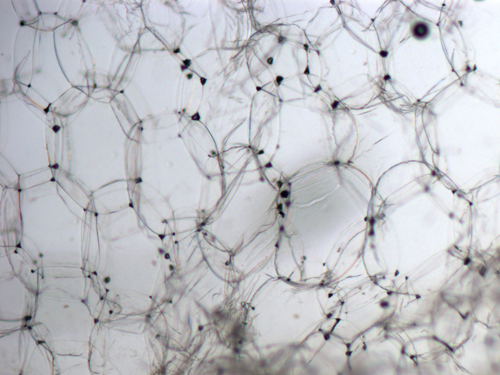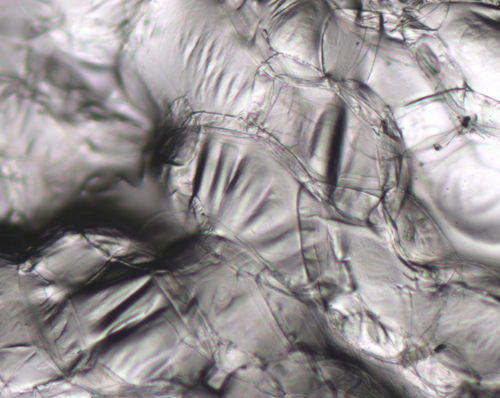

Components of Aloe vera Gel
The latex-like resin secreted from A. vera leaves is commonly known as Aloe Vera Gel. This gel is a complex combination of many different substances. Some are anti-inflammatories, such as the amino acids tryptophane and phenylalanine. In this respect, one study found that Aloe gel combined with hydrocortisone, a man-made form of the human body's own cortisol, had a large effect on reducing external inflammation (Davis, 1993). In terms of wound healing applications, Aloe is good at keeping a wound moist; this, along with keeping the wound uncovered, has been seen to promote the movement of skin cells and fibroblasts, which hastens the healing rate. Aloe is also thought to have a two-fold "stimulatory" quality, in that it helps the body produce antibodies to fight off any infection of a wound, in addition to stimulating growth of new tissue to replace the destroyed section of skin.
Aloe has also been found to have mixed effects on the internal organs of the body. Animal tests have shown the gel to help in the prevention and healing of ulcers along the gastrointestinal tract; in the reduction of total cholesterol levels; and in the prevention of coronary heart disease (Danhof).
However, some researchers and institutions are mixed about these wonderful-sounding claims of the potential healing powers of Aloe gel. The Mayo Clinic, a world-renowned research facility, has found external research supporting both sides of the argument; in the case of wound healing, for instance, they state on their website that "some studies report[ed] positive results and others show[ed] no benefit or potential worsening of the condition."

Despite its own complexity, "the Aloe vera molecule does not act alone, but rather acts in either an additive or synergistic fashion with some of the 100 constituents of Aloe vera" (Davis, 1993). "As the internal gel is 99+% water, the notion comes to mind that the 1% or so of solids... is not a sufficient amount of any one constituent to do anything at all on a rational basis" (Danhof). This mutual necessity of Aloe gel with other chemical compounds could account for why some studies found the gel to be effective when other studies conducting similar experiments did not.
Nevertheless, the production, manufacturing, and sale of Aloe gel has become a major industry in the past few decades—so much so that there is now a non-profit regulatory committee known as the International Aloe Science Council that oversees the incorporation of the gel into cosmetics, pharmaceuticals, and scientific studies. Though the true effects of using the gel from Aloe plants are still up for debate in the scientific community, many people like myself believe highly in its myriad qualities and possibilities.
Click here to view the Image Gallery, with larger views and descriptions of each photograph.
All text and images ©Glenn Doherty, 2008. Reproduction without permission is prohibited.
Permission for use of any images can be granted by emailing me at doherty.glenn@gmail.com.